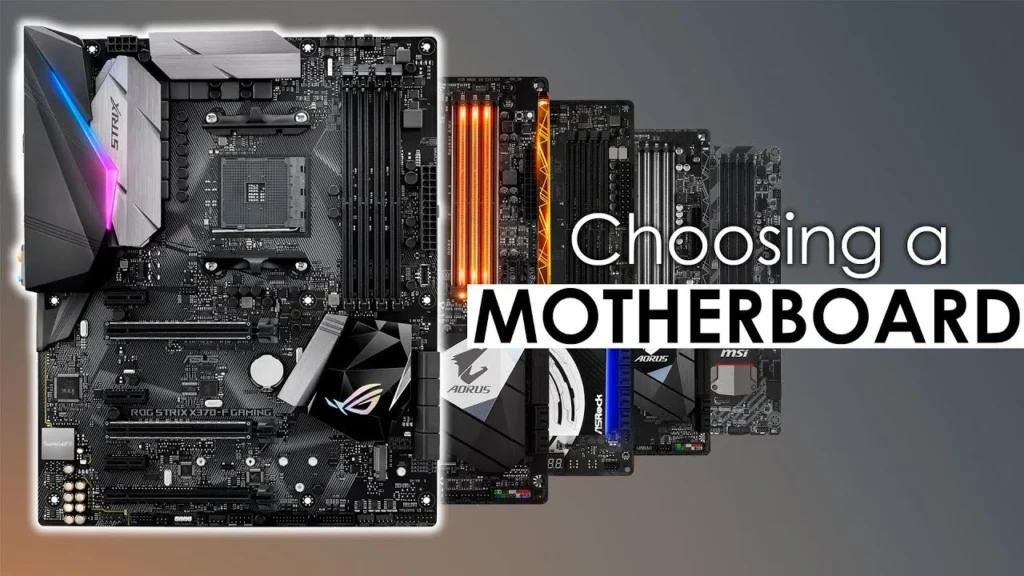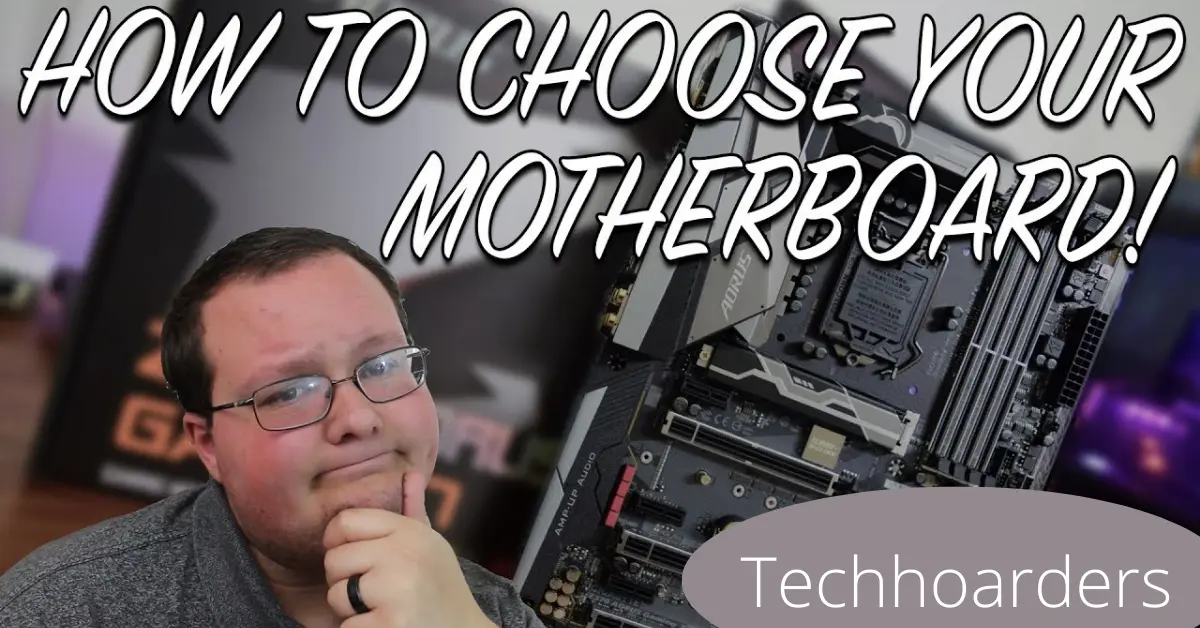Motherboards are the backbone of every computer. They provide all the peripheral connections, and they include circuitry for communicating with other components in the system. It’s important to pick a motherboard that is compatible with your CPU, memory type, hard disk drives, optical drives, case, and power supply unit.
The first step in selecting a motherboard is determining which socket type your CPU fits into—for instance LGA1155 socket for Intel’s 3rd generation ‘Ivy Bridge’ chips or Socket FM2+ for AMD APU support up to A-Series ‘Kaveri’ processors. While it may be tempting to look at cheaper motherboards that don’t fully support your hardware now but claim future upgrade support, consider that you’ll also want to make sure your motherboard is compatible with future devices.
If the system can be upgraded in terms of performance, then go with an ATX-sized board; they generally offer more peripheral connections than MicroATX boards do (see further down). Also, consider how many expansion slots are available. If you’re using two video cards, look for SLI or CrossFire support on higher-end motherboards. Some high-end AMD CPUs come with video capabilities built right into their silicon so they can provide a boost to certain games but may not be as fast as dedicated graphics cards—remember this when making your purchase too!
Processor Socket
The processor/CPU in a computer system is essentially the ‘brain’ that tells all the other components what to do. If you have an Intel CPU, then your motherboard must also have an Intel chipset because AMD CPUs are not compatible with Intel chipsets. Chipset compatibility will determine which sockets are available on the board, so make sure you choose your CPU first before buying anything else. This applies similarly to AMD processors and motherboards with an AMD chipset. Make sure your motherboard supports the socket type of your processor! For example, if you buy a DDR3 RAM module when the motherboard only supports DDR2 because it’s much older technology, be prepared for potential problems or incompatibility.
Choosing a Chipset
There is a wide range of chipsets available from both Intel and AMD, but the ones you choose will depend on your motherboard. For example, if you have an Intel CPU then you can’t use an AMD chipset as they are not compatible – so make sure to check first! More expensive motherboards generally provide more features than cheaper ones so keep this in mind when making a decision. All will have ‘on board sound’ with varying degrees of quality depending on the model, attach USB 2.0 and/or 3.0 ports for extra functionality like charging smart devices (tablets etc.) and transfer speeds up to 10x faster than older USB 1.1/2.0; some will also support SATA 6Gb/s for faster data transfer speeds and a maximum of 6 external SATA drives.
Most desktops will use the LGA1155 socket, while most laptops will use the BGA956 socket. If you’re planning on using DDR3 RAM then make sure your motherboard is DDR3 compatible as well – for example, if your motherboard only supports DDR2 RAM it won’t work with newer memory technology.
You can buy motherboards based on AMD’s FM1 or FM2 sockets, but be aware they are not backwards compatible with older CPUs – always check what sockets are supported before buying! Note that some models only support certain types of RAM modules, so make sure it fits your board’s specifications. Always check motherboard specs for compatibility.
Expansion Slots
Expansion slots are used to provide extra functionality on some motherboards. PCI Express x16 graphics card slots can be used for high-end gaming systems with high-speed video cards, while PCI x1 slots are usually used for sound cards and TV tuners. On the other hand, most Mini ITX boards don’t support expansion slots at all so double-check it before buying anything! If you plan on installing more than one video card or anything else that requires an expansion slot then make sure your motherboard is compatible with whatever you’re planning to install first! PCPartPicker is a great way to double-check compatibility before making any purchases. Note that if you plan on using two video cards in SLI/CrossFire mode then you’ll need a motherboard with at least two PCI-E 16x slots.

RAM
The motherboard you choose must have sufficient RAM support, so check the specs first! You can use up to 32GB of DDR3 memory on most motherboards these days, but double check that it supports the amount of RAM you plan to install first before buying anything. Form Factor
Make sure your PC case is compatible with the form factor of the motherboard you are planning to buy – for example, if your case uses mATX then you must buy an mATX motherboard etc. Make sure to pick a size which will fit what you’re trying to build, and always measure just in case! What You Need to Know About BIOS Most modern motherboards will come with a UEFI BIOS instead of the older style BIOS interface. It’s much easier to use, can recognize large hard drives up to 2TB and also makes use of mouse input – it might seem intimidating at first but you’ll get used to it in no time! Internal Connectors
Your motherboard must have all the required ports for your case externally (most cases don’t come with this built-in) as well as internally so check carefully before buying anything. There are many types of internal connectors such as USB headers, front panel audio etc. so make sure to double-check compatibility if they aren’t already included or built into your case before making any purchases! External Ports
External ports include the back of a PC case and the outside of a desktop tower. They include USB, eSATA, Firewire etc. and you will need to buy an expansion card or adapter if there isn’t enough already built into your case – for example, most cases only have 4-6 USB ports so you will need at least one USB expansion card if you plan on adding more than two hard drives/flash drives etc.
Form Factor
Make sure the form factor of the motherboard you’re buying is compatible with your case and vice versa. For example, mATX cases will only fit an mATX motherboard and ATX cases will only fit an ATX motherboard – always double-check beforehand! Some motherboards come in both ATX and mATX form factors however so you won’t have to buy a new one if what you’ve got currently is smaller than usual, but make sure it’s big enough first! Also, some cheaper cases might not be compatible with larger motherboards such as Extended ATX etc. so always double-\
What do You need to Know About BIOS?
Most modern motherboards will come with a UEFI BIOS instead of the older style BIOS interface. It’s much easier to use, can recognize large hard drives up to 2TB and also makes use of mouse input – it might seem intimidating at first but you’ll get used to it in no time! Internal Connectors
Your motherboard must have all the required ports for your case externally (most cases don’t come with this built-in) as well as internally so check carefully before buying anything. There are many types of internal connectors such as USB headers, front panel audio etc. so make sure to double-check compatibility if they aren’t already included or built into your case before making any purchases! External Ports
External ports include the back of a PC case and the outside of a desktop tower. They include USB, eSATA, Firewire etc. and you will need to buy an expansion card or adapter if there isn’t enough already built into your case – for example, most cases only have 4-6 USB ports so you will need at least one USB expansion card if you plan on adding more than two hard drives/flash drives etc.
Form Factor
Make sure the form factor of the motherboard you’re buying is compatible with your case and vice versa. For example, mATX cases will only fit an mATX motherboard and ATX cases will only fit an ATX motherboard – always double-check beforehand! Some motherboards come in both ATX and mATX form factors however so you won’t have to buy a new one if what you’ve got currently is smaller than usual, but make sure it’s big enough first! Also, some cheaper cases might not be compatible with larger motherboards such as Extended ATX etc. so always double-check beforehand – don’t want to end up with a dud case!
External Ports
External ports include the back of a PC case and the outside of a desktop tower. They include USB, eSATA, Firewire etc. and you will need to buy an expansion card if there isn’t enough already built into your case – for example, most cases only have 4-6 USB ports so you will need at least one USB expansion card if you plan on adding more than two hard drives/flash drives etc.
What’s a PCB?
A Printed Circuit Board (PCB) is what all motherboards are made from as well as graphic cards and processors! It’s a board which has lots of little components that enable computers to work – it usually contains things such as RAM slots, PCI Express connectors, sockets for heatsinks etc.
What You Need to Know About BIOS
Most modern motherboards will come with a UEFI BIOS instead of the older style BIOS interface. It’s much easier to use, can recognize large hard drives up to 2TB and also makes use of mouse input – it might seem intimidating at first but you’ll get used to it in no time!
What Else Do Manufacturers Add?
Manufacturers such as MSI, ASUS and Gigabyte usually include extra software that makes using a computer easier. For example, ASUS has a WinFlash tool which allows you to flash the BIOS without having to go into the BIOS menu itself – much better than going through all those settings manually! Other things manufacturers might include are their custom UEFI interface, USB boost etc. so see what your manufacturer includes to see if it’s worth it for you\
Make Your Choice
Now that you know everything there is to know about motherboards, check out our motherboard database here or head on over to our Best Motherboard list here and choose one that best suits your preferences/needs!
